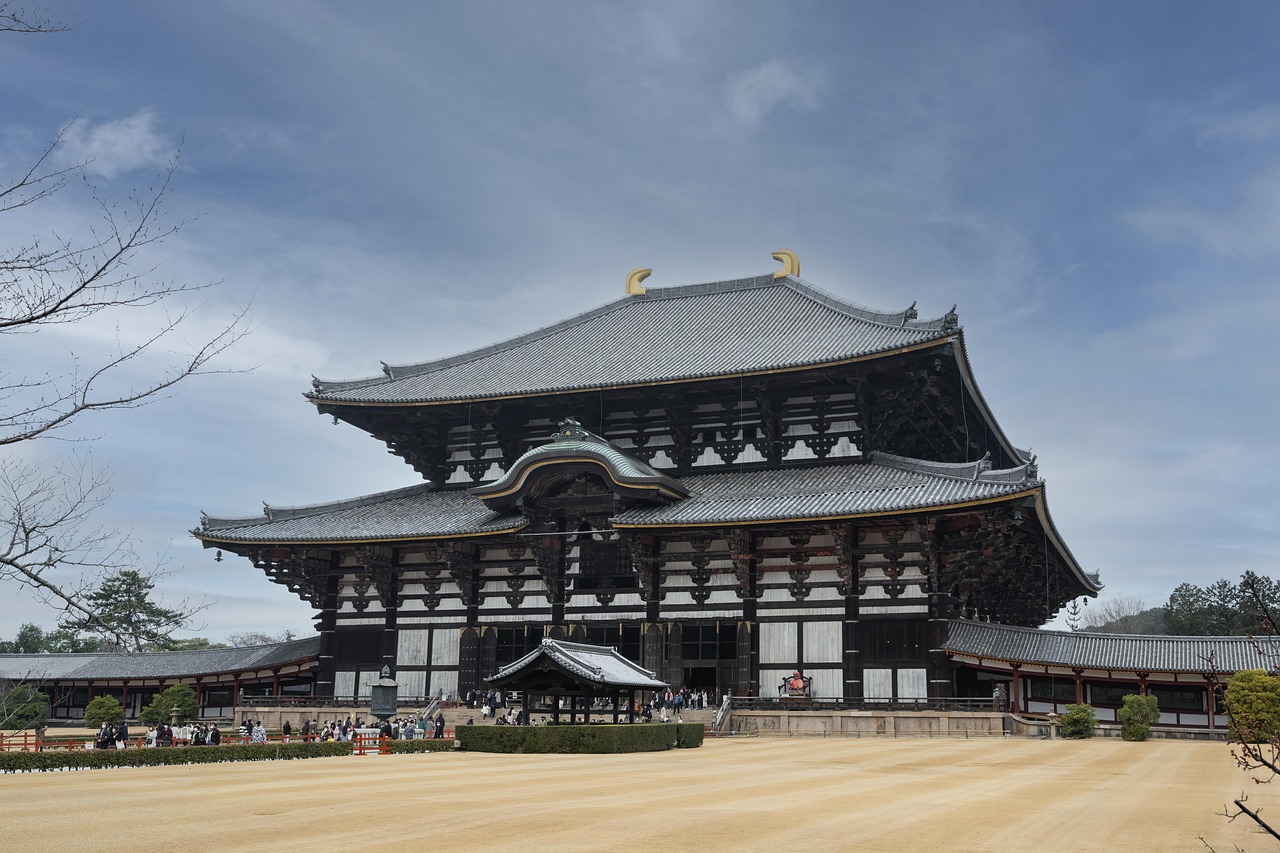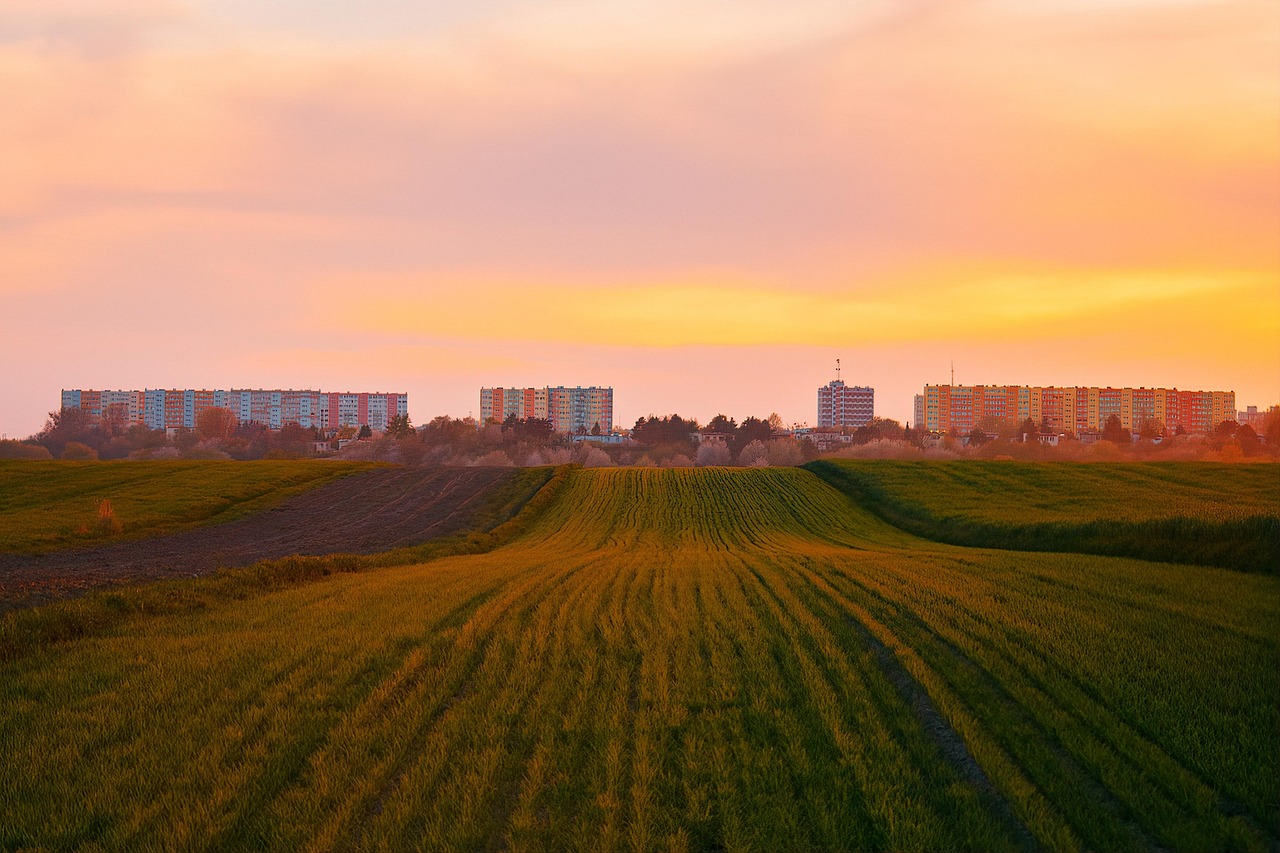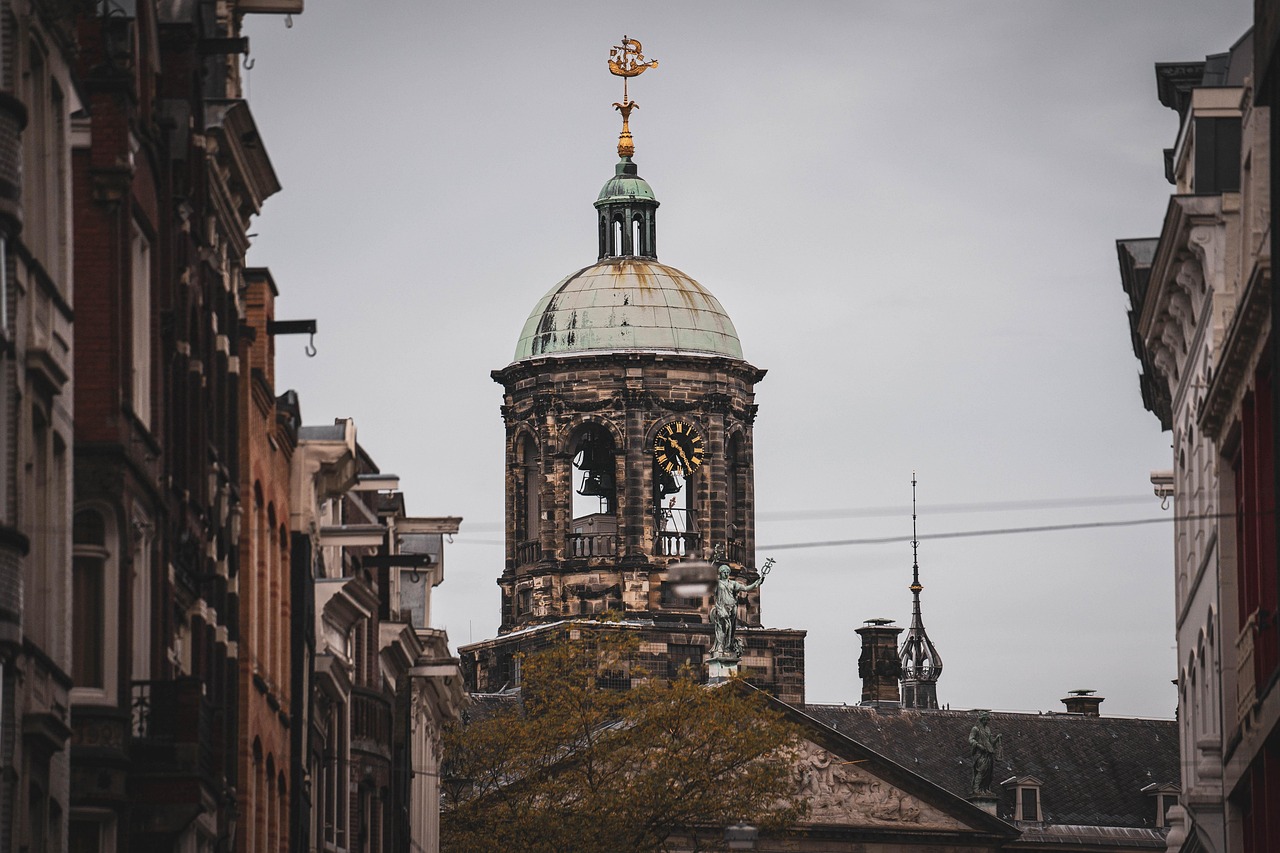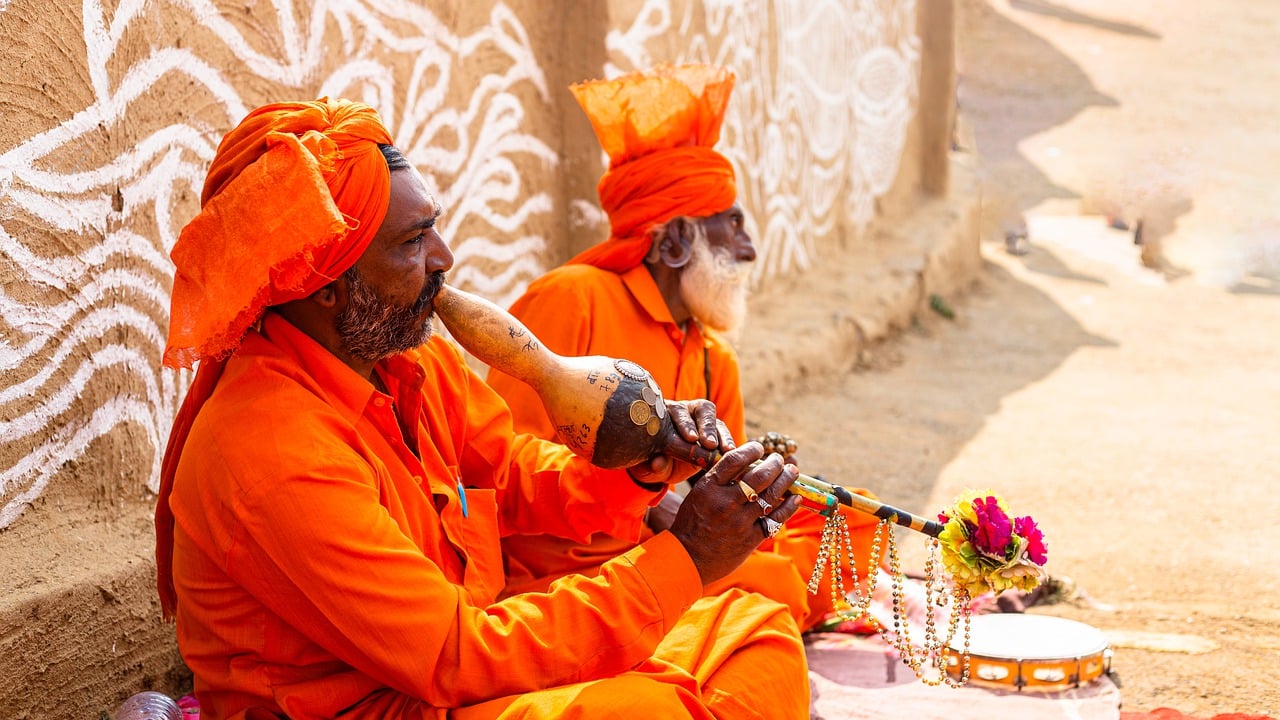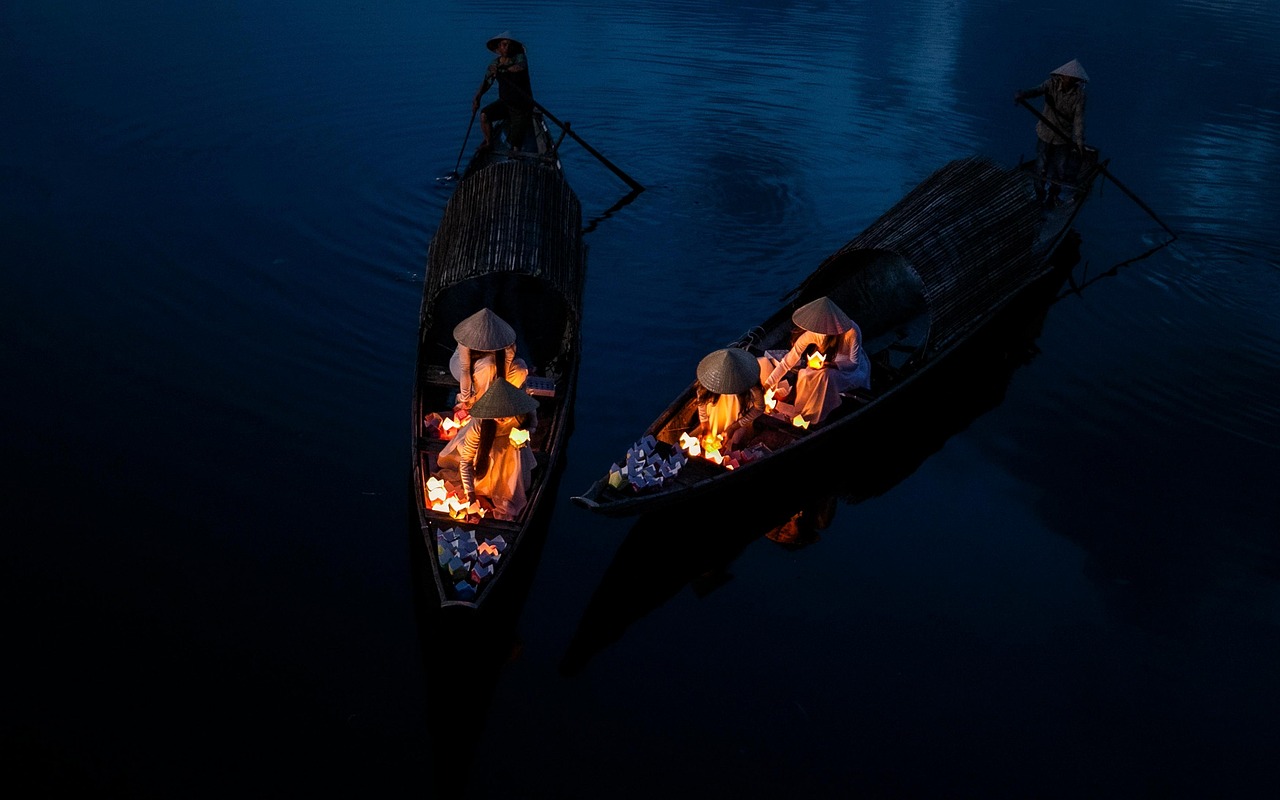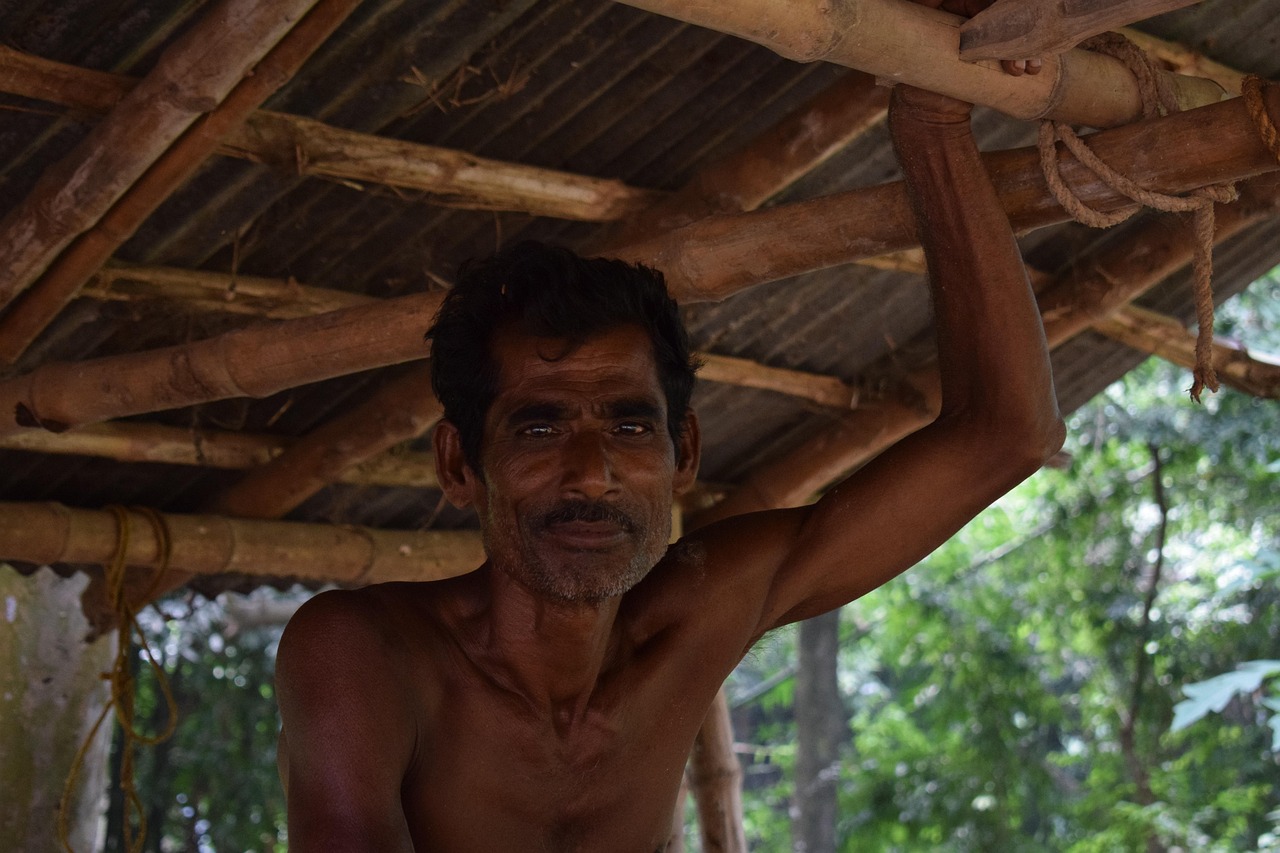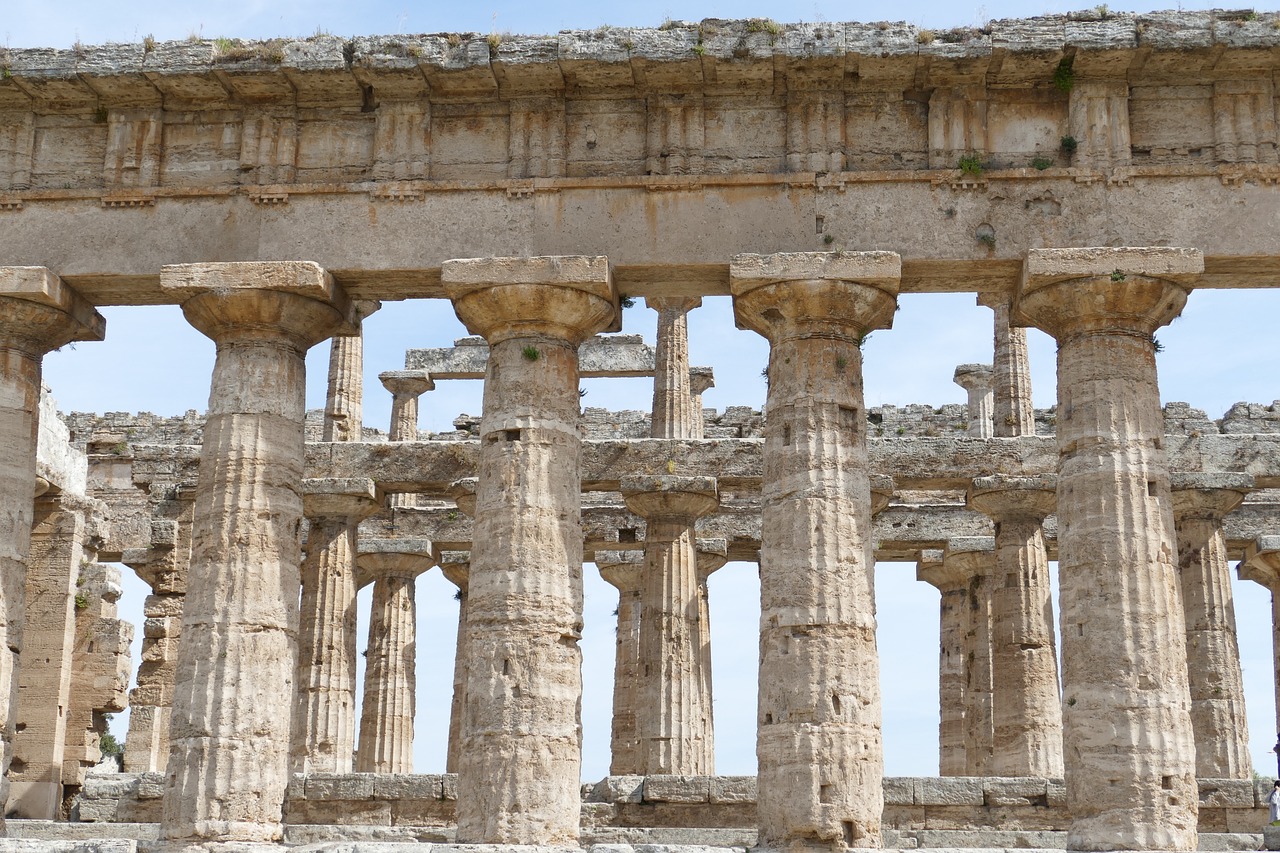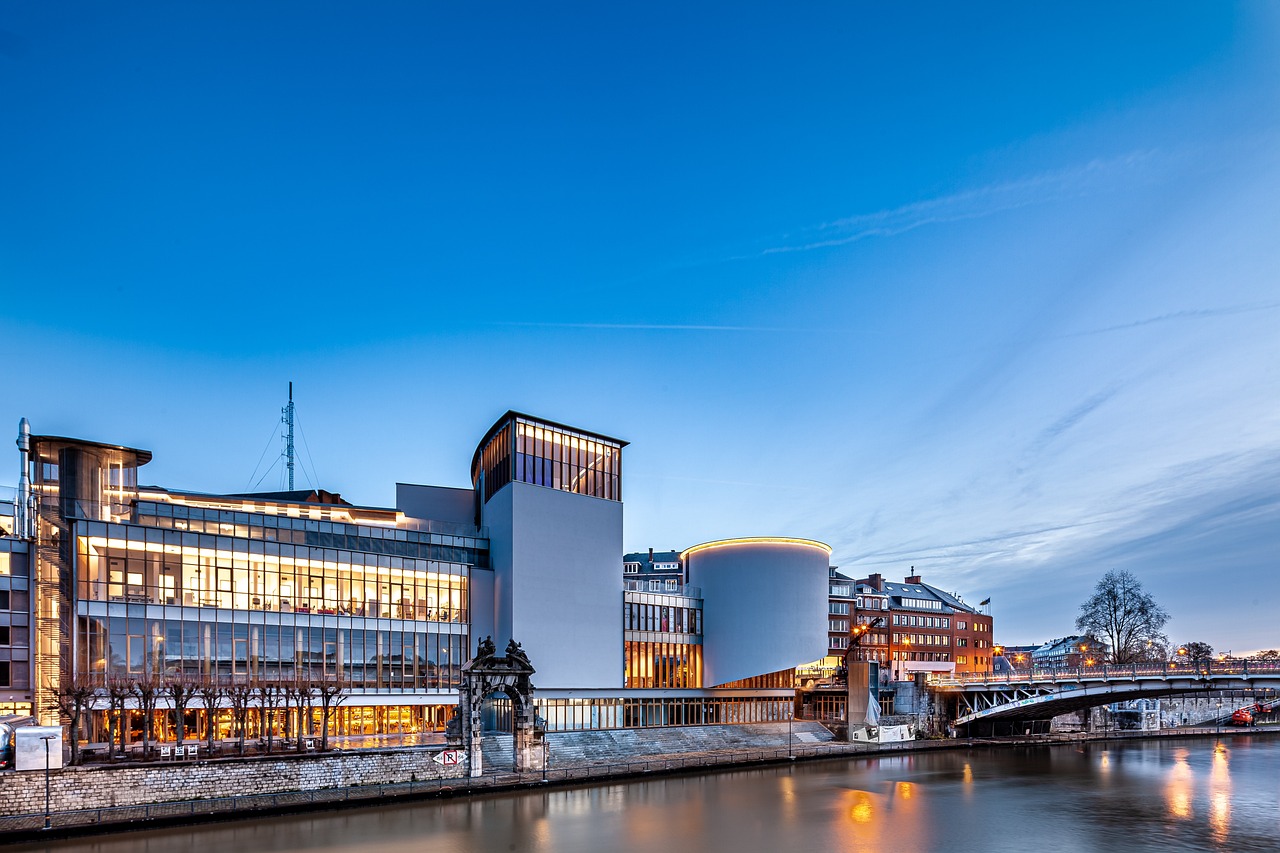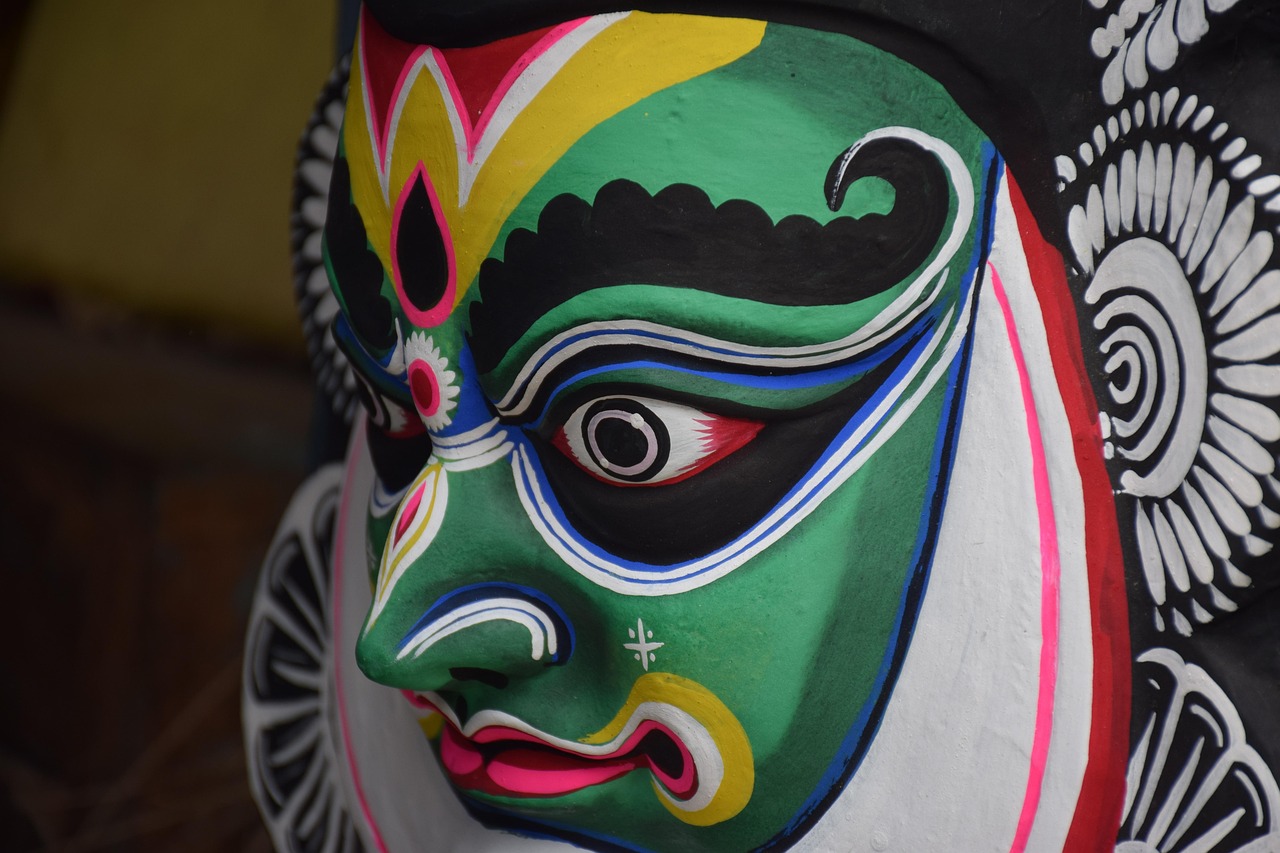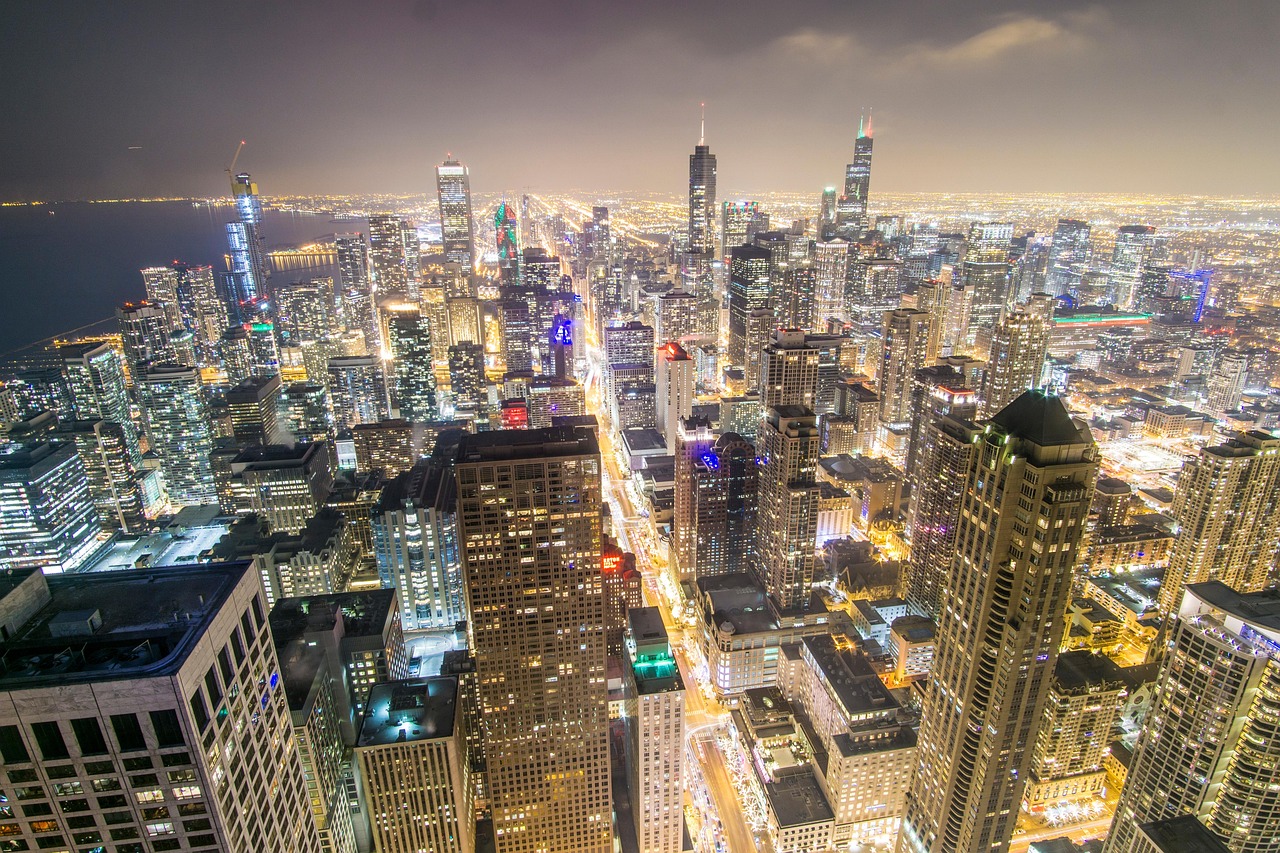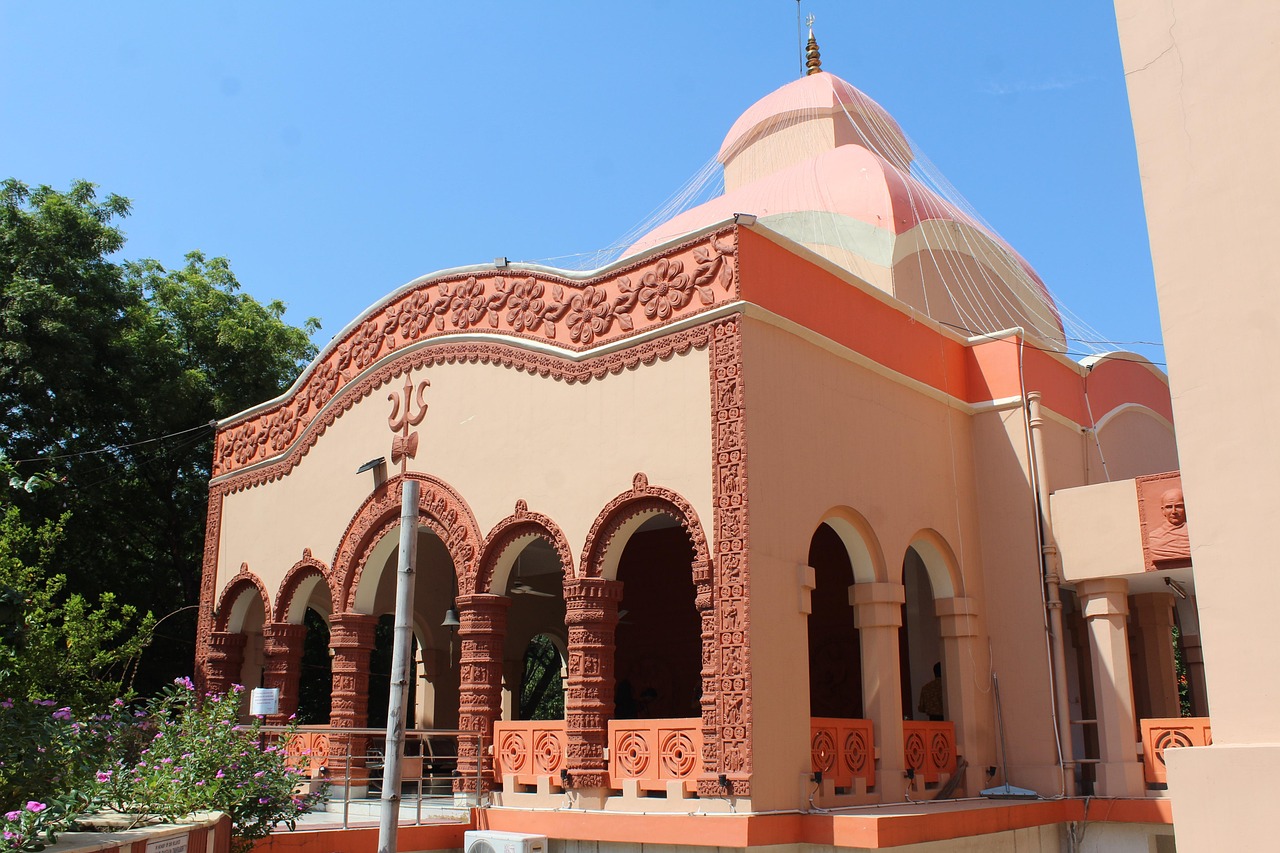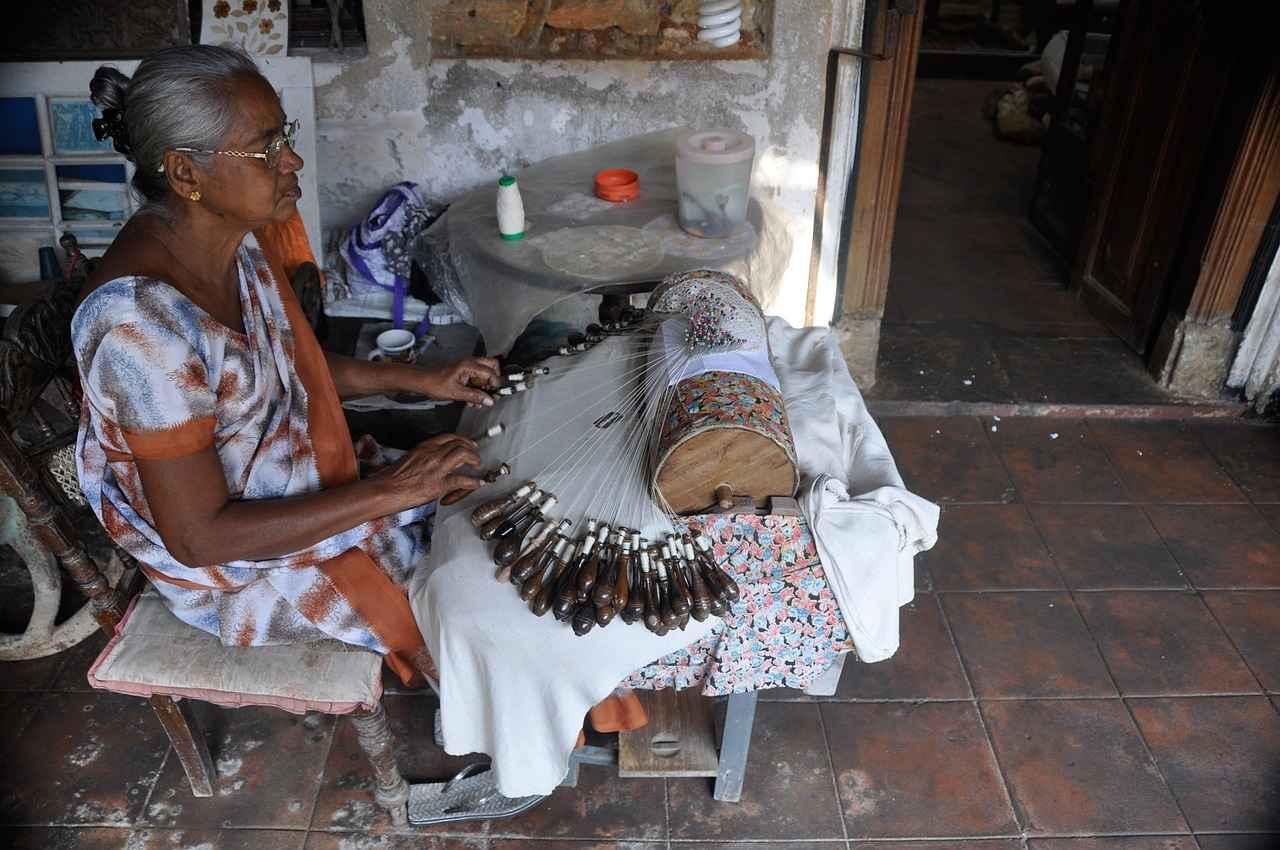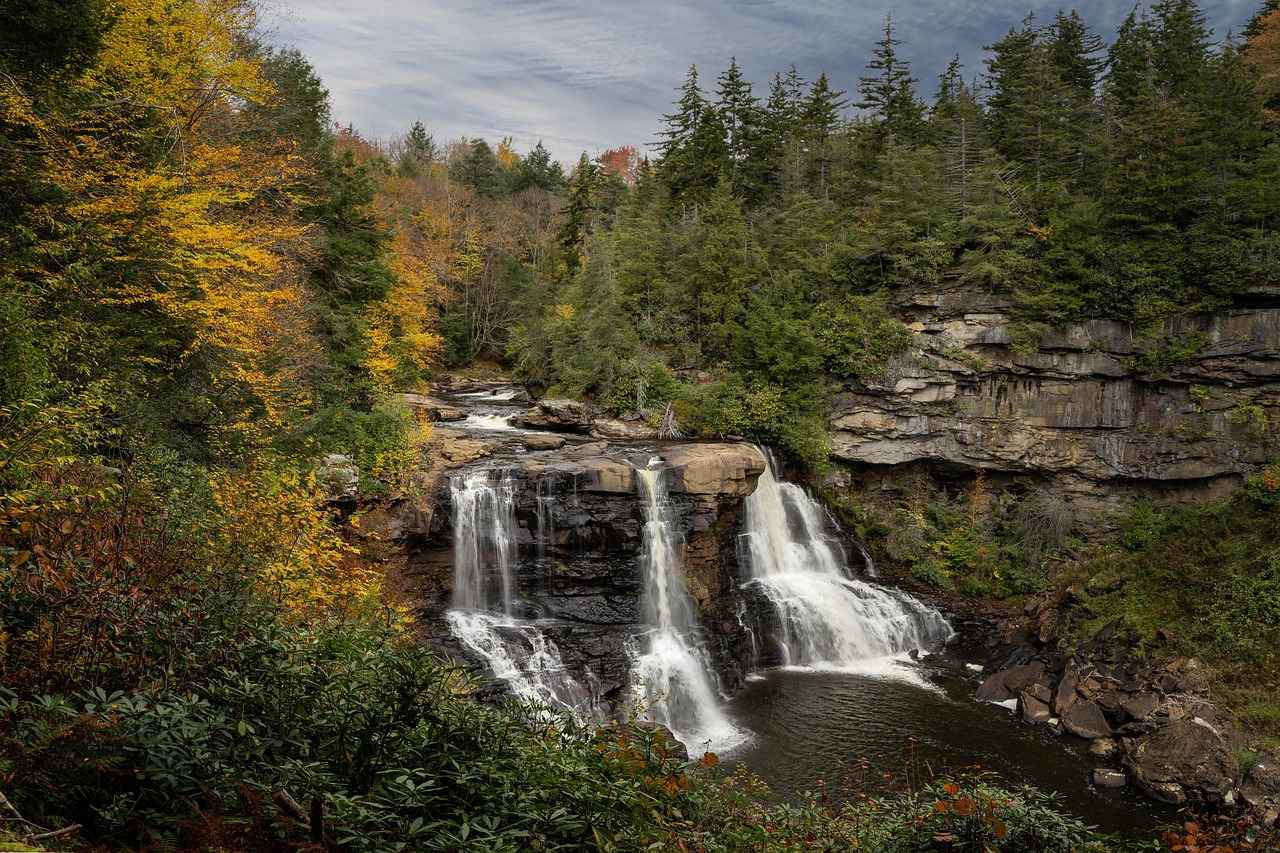This article explores the five most significant temples in West Bengal, highlighting their historical, architectural, and cultural importance. Discover the spiritual essence and beauty of these sacred sites.
The Historical Significance of West Bengal Temples
West Bengal is home to numerous temples that reflect the rich history and cultural diversity of the region. Each temple tells a unique story woven into the fabric of Indian spirituality, serving as a testament to the evolution of religious practices over centuries.
The Architectural Marvels of West Bengal Temples
The temples in West Bengal showcase stunning architectural styles, from intricate carvings to majestic domes. This section delves into the various designs that make these temples visually captivating, featuring elements such as:
- Terracotta panels
- Ornate sculptures
- Unique domes and spires
Prominent Festivals Celebrated at West Bengal Temples
Festivals play a vital role in temple life, drawing devotees and tourists alike. Major festivals such as Durga Puja and Kali Puja are celebrated with great fervor, showcasing the vibrant culture and traditions of the region.
Top 5 Must-Visit Temples in West Bengal
- Dakshineswar Kali Temple: Renowned for its stunning architecture and spiritual significance, this temple is dedicated to Goddess Kali and attracts thousands of devotees.
- Vishnupur Temples: Famous for their terracotta art, the Vishnupur temples are a must-visit for those interested in culture and history, showcasing exquisite craftsmanship.
- Kalighat Kali Temple: One of the 51 Shakti Peethas, this temple is a major pilgrimage site, known for its rich history and rituals performed by devotees.
- Belur Math: The headquarters of the Ramakrishna Mission, this temple symbolizes harmony and is admired for its architectural beauty.
- Sri Ramakrishna Sarada Devi Temple: Honoring the life and teachings of Sri Ramakrishna and Sarada Devi, this temple promotes spiritual education and community service.
Conclusion: Embracing the Spiritual Journey
Visiting these temples in West Bengal offers a profound spiritual experience, connecting visitors to the region’s rich heritage. They are not just places of worship but also cultural landmarks that embody the essence of Bengali spirituality.

The Historical Significance of West Bengal Temples
West Bengal, a state in eastern India, is a treasure trove of temples that embody the region’s rich historical and cultural tapestry. Each temple is not merely a structure but a repository of stories and traditions that have evolved over centuries. From ancient times to the present, these sacred sites have played a pivotal role in shaping the spiritual landscape of the area.
The temples of West Bengal are diverse in their architectural styles and religious significance, showcasing the influences of various dynasties and cultures. For instance, the terracotta temples of Vishnupur reflect the artistry of the Malla kings, while the grand structures of Dakshineswar and Kalighat are steeped in the Shakta tradition of worshipping the goddess Kali. Each temple’s design and iconography tell a unique story that resonates with the local community and visitors alike.
Moreover, these temples serve as cultural hubs, where festivals and rituals are celebrated with fervor. Events like Durga Puja and Kali Puja attract thousands of devotees, creating a vibrant atmosphere that showcases the spiritual fervor of the Bengali people. The rituals performed here are steeped in tradition and are often accompanied by music, dance, and art, making these temples not only places of worship but also centers of cultural expression.
As we delve deeper into the historical significance of West Bengal’s temples, we uncover their roles as beacons of community and identity. They are places where people gather to seek blessings, celebrate life events, and find solace. The stories embedded within these sacred spaces are integral to understanding the spiritual journey of the region.
In conclusion, the temples of West Bengal are more than just architectural marvels; they are living embodiments of the region’s spiritual heritage. Each visit to these temples offers a glimpse into the past, allowing individuals to connect with the rich tapestry of history and culture that defines West Bengal.

The Architectural Marvels of West Bengal Temples
The temples of West Bengal stand as testaments to the region’s rich cultural heritage and artistic prowess. These sacred structures not only serve as places of worship but also as magnificent examples of architectural brilliance that reflect the diverse influences of various eras. From the intricate carvings to the majestic domes, the design elements of these temples captivate both devotees and tourists alike.
One of the most striking features of West Bengal temples is their intricate carvings. Each temple is adorned with detailed sculptures depicting mythological scenes, gods, and goddesses, showcasing the skill of local artisans. The craftsmanship involved in these carvings tells stories of devotion and spirituality, making every visit a journey through history.
Moreover, the majestic domes and spires of these temples are not merely aesthetic; they symbolize the connection between the earthly and the divine. For instance, the Dakshineswar Kali Temple features a stunning blend of traditional and modern architectural elements, creating a unique visual experience that draws visitors from all over the world.
In addition to their architectural styles, many temples in West Bengal incorporate local materials and techniques, giving each structure a distinctive character. The use of terracotta tiles, for example, is prevalent in the Vishnupur temples, where the vibrant colors and textures add to their charm.
Furthermore, the layout of these temples often includes serene courtyards and gardens, promoting a sense of peace and tranquility. This thoughtful design enhances the spiritual experience, allowing visitors to reflect and connect with their faith in a serene environment.
In conclusion, the temples of West Bengal are not just places of worship; they are architectural marvels that embody the region’s rich cultural and spiritual heritage. Their intricate designs and historical significance make them must-visit sites for anyone exploring the beauty of West Bengal.
The Influence of Bengali Culture on Temple Architecture
Bengali culture has played a pivotal role in shaping the architectural landscape of temples in West Bengal. The unique blend of traditional styles and local artistry creates a distinctive aesthetic that reflects the region’s rich cultural heritage. This subsection delves into the various cultural elements that contribute to the design and aesthetics of these sacred places.
One of the most notable features of Bengali temple architecture is the use of terracotta panels. These intricately designed tiles often depict scenes from mythology, folklore, and daily life, showcasing the artistic prowess of local artisans. The vibrant colors and detailed craftsmanship not only enhance the visual appeal of the temples but also serve as a narrative medium, telling stories that resonate with the community.
Additionally, the architectural style of Bengali temples often incorporates chhatris (elevated domes) and shikhars (spires), which are characteristic of the region. These elements are not merely decorative; they symbolize the connection between the earthly realm and the divine. The layout of the temples is also influenced by the Vaastu Shastra, an ancient Indian science of architecture, which emphasizes harmony and balance in design.
The spiritual significance of these temples is further enhanced by their surroundings. Many are situated near rivers, lakes, or hills, which are considered sacred in Bengali culture. The natural landscapes complement the architectural beauty, creating a serene atmosphere conducive to worship and reflection.
In conclusion, the influence of Bengali culture on temple architecture is profound and multifaceted. By blending traditional styles with local artistry, these sacred spaces not only serve as places of worship but also as cultural landmarks that embody the essence of Bengali spirituality. Understanding these influences enriches our appreciation of the temples and the vibrant culture they represent.
Unique Features of Bengali Temple Architecture
Bengali temple architecture is a fascinating blend of historical significance and artistic expression. Characterized by distinctive elements, these temples stand out not only in West Bengal but also across India. This section delves into the unique features that define Bengali temples, showcasing their cultural and spiritual essence.
- Terracotta Panels: One of the most striking aspects of Bengali temples is the extensive use of terracotta panels. These clay artworks often depict scenes from Hindu mythology, showcasing intricate craftsmanship that narrates stories of gods and goddesses.
- Ornate Sculptures: The temples are adorned with ornate sculptures that reflect the rich artistic heritage of Bengal. These sculptures are not merely decorative; they embody the spiritual beliefs and cultural narratives of the region.
- Unique Architectural Styles: Bengali temples often feature a blend of traditional and contemporary styles. The chala style, characterized by a sloping roof, is particularly prominent, giving these temples a distinctive silhouette against the skyline.
- Intricate Carvings: The walls of Bengali temples are often embellished with intricate carvings that depict floral patterns, animals, and mythological figures. These carvings are not only aesthetically pleasing but also serve to convey spiritual messages.
- Use of Local Materials: Many temples utilize locally sourced materials, such as brick and stone, which not only enhances their sustainability but also connects them to the geographical and cultural context of Bengal.
The rich tapestry of Bengali temple architecture offers a unique glimpse into the region’s spiritual heritage and artistic legacy. By exploring these distinctive features, one can appreciate how these temples serve as both places of worship and cultural landmarks.
Comparative Analysis with Other Indian Temples
The temples of West Bengal stand out not only for their stunning architecture but also for their deep cultural roots and spiritual significance. When comparing these temples with those from other Indian states, several similarities and differences emerge, reflecting the diverse tapestry of Indian religious architecture.
- Architectural Styles: West Bengal temples often showcase a unique blend of Hindu and Islamic architectural elements, particularly evident in the intricate terracotta work found in Vishnupur temples. In contrast, temples in states like Tamil Nadu are characterized by towering gopurams (gateway towers) and elaborate stone carvings.
- Cultural Significance: Temples in West Bengal, such as the Kalighat Kali Temple, serve as pivotal cultural hubs, reflecting the local customs and practices. Conversely, temples in states like Uttar Pradesh, such as the Kashi Vishwanath Temple, are often pilgrimage sites that attract devotees from across the country, emphasizing their national significance.
- Ritual Practices: The rituals performed at West Bengal temples often incorporate local traditions and festivals, such as Durgotsava, which is celebrated with great fervor. In comparison, temples in Maharashtra, like the Shree Siddhivinayak Temple, focus on the worship of specific deities, often with unique rituals that draw large crowds.
Furthermore, the community role of temples in West Bengal is profound. They often act as centers for social gatherings and cultural events, fostering a sense of community among locals. This contrasts with temples in other regions, where the focus may be more on individual worship and less on community involvement.
In summary, while West Bengal temples share commonalities with other Indian temples, such as spiritual purpose and architectural beauty, they also possess distinctive features that reflect the state’s unique cultural identity. Understanding these nuances enhances our appreciation of India’s rich religious landscape.
Prominent Festivals Celebrated at West Bengal Temples
Festivals are an integral part of temple life in West Bengal, serving as a vibrant expression of spirituality and community bonding. These celebrations not only draw devotees but also attract numerous tourists eager to experience the rich cultural heritage of the region. Each festival is steeped in tradition and carries profound significance, reflecting the beliefs and values of the local populace.
- Dussehra: Celebrated with great fervor, Dussehra marks the victory of good over evil. Temples like the Kalighat Kali Temple become focal points for grand processions and rituals, culminating in the immersion of idols in the river.
- Durga Puja: This is perhaps the most celebrated festival in West Bengal, showcasing elaborate decorations and artistic idol craftsmanship. Temples are adorned with lights and flowers, and the atmosphere is filled with joy and devotion.
- Rath Yatra: The annual chariot festival, particularly prominent in the Jagannath Temple, attracts thousands of devotees who participate in pulling the chariots, symbolizing the journey of the deities.
- Poila Baisakh: The Bengali New Year is celebrated with rituals at various temples, where people seek blessings for prosperity and happiness. This festival is marked by traditional music, dance, and feasting.
- Shivratri: Dedicated to Lord Shiva, this festival sees devotees fasting and engaging in night-long vigils at temples, highlighting their devotion and spiritual commitment.
These festivals not only strengthen the bonds within the community but also serve as a means for cultural exchange, showcasing the diversity of traditions within West Bengal. The vibrant celebrations at these temples create a unique atmosphere that resonates with spirituality and joy, making them a must-visit for anyone exploring the region.

Top 5 Must-Visit Temples in West Bengal
West Bengal, a state rich in history and spirituality, is home to numerous temples that are not only places of worship but also architectural marvels. In this section, we will explore the top five must-visit temples in West Bengal, delving into their history, architecture, and the unique spiritual experiences they offer to visitors.
- Dakshineswar Kali Temple: This temple, dedicated to the goddess Kali, is famous for its stunning architecture and vibrant rituals. Established in 1855, it is known for its scenic location along the Hooghly River and attracts thousands of devotees each year. The temple complex features 12 identical Shiva temples, adding to its spiritual ambiance.
- Vishnupur Temples: Renowned for their intricate terracotta art, the Vishnupur temples are a testament to the rich cultural heritage of Bengal. Built during the Malla dynasty, these temples showcase exquisite carvings that depict various mythological themes. The Rasmancha, a unique temple structure, is particularly noteworthy for its distinctive architecture.
- Kalighat Kali Temple: One of the 51 Shakti Peethas, the Kalighat Kali Temple is a significant pilgrimage site for devotees of the goddess Kali. The temple has a rich history dating back to the 1800s and is famous for its unique idol of Kali, which is adorned with flowers and offerings. The rituals performed here create a deeply spiritual atmosphere.
- Belur Math: Serving as the headquarters of the Ramakrishna Mission, Belur Math is a symbol of harmony and peace. The temple complex features a blend of architectural styles, including Hindu, Muslim, and Christian influences. Visitors can experience the serene environment and participate in various spiritual activities and teachings.
- Sri Ramakrishna Sarada Devi Temple: This temple honors the revered spiritual leaders Sri Ramakrishna and Sarada Devi. It is dedicated to promoting spiritual education and community service. The temple’s tranquil surroundings and engaging programs make it a vital center for spiritual growth and learning.
Each of these temples offers a unique glimpse into the spiritual and cultural fabric of West Bengal. They are not merely places of worship but also historical landmarks that reflect the region’s rich heritage. A visit to these sacred sites promises a profound experience, connecting visitors to the essence of Bengali spirituality.
The Dakshineswar Kali Temple is a remarkable site that attracts countless visitors each year due to its rich history and breathtaking architecture. Located on the banks of the Hooghly River in West Bengal, this temple is dedicated to Kali Ma, the fierce goddess of destruction and transformation in Hinduism. The temple was established in the mid-19th century by Rani Rashmoni, a prominent figure known for her philanthropic efforts and devotion to the goddess.
The architecture of the Dakshineswar Kali Temple is an exquisite blend of traditional Bengali styles and neo-classical influences. Its towering spires and intricate carvings showcase the artistic mastery of the craftsmen of that era. The temple complex comprises several smaller shrines, each dedicated to different deities, creating a vibrant atmosphere filled with devotion and spirituality.
Visitors to the temple can witness a variety of rituals and ceremonies that take place throughout the day. One of the most significant rituals is the daily offering of food to the goddess, known as bhog, which is later distributed to devotees as a form of blessing. The temple also hosts grand celebrations during festivals, such as Durga Puja and Navaratri, drawing thousands of devotees and tourists alike.
In addition to its spiritual significance, the Dakshineswar Kali Temple is also a place of cultural gathering, where visitors can engage in discussions about spirituality, philosophy, and community service. The temple’s serene surroundings provide a perfect backdrop for reflection and meditation, making it a must-visit destination for anyone exploring the spiritual landscape of West Bengal.
Overall, the Dakshineswar Kali Temple stands as a testament to the enduring faith of its devotees and the rich cultural heritage of the region. Its architectural beauty, historical significance, and vibrant rituals make it an essential part of West Bengal’s spiritual journey.
Vishnupur Temples stand as a testament to the rich cultural heritage and artistic excellence of West Bengal. Renowned for their intricate terracotta art, these temples are a treasure trove for history enthusiasts and art lovers alike. Nestled in the heart of Vishnupur, these architectural marvels reflect the unique blend of spirituality and artistry that characterizes the region.
The temples, primarily built during the 18th century, showcase a distinct style known as Bengal temple architecture. This architectural style is characterized by its chala roofs and extensive use of terracotta tiles, which depict various mythological scenes and floral motifs. The most notable among these temples is the Rasmancha, a unique structure that serves as a platform for the annual Rasa festival, where the idol of Lord Krishna is displayed.
One of the unique features of the Vishnupur temples is the extensive use of terracotta panels that adorn their walls. These panels narrate stories from Hindu mythology, showcasing the craftsmanship of the artisans of that era. The intricate designs not only serve an aesthetic purpose but also provide insight into the cultural narratives of the time.
Visitors to the Vishnupur temples can also appreciate the serene environment that surrounds these sacred sites. The temples are often enveloped by lush greenery, creating a tranquil atmosphere that enhances the spiritual experience. The harmonious blend of nature and architecture makes it a perfect spot for reflection and meditation.
In conclusion, the Vishnupur temples are more than just places of worship; they are a celebration of art, culture, and history. A visit to these temples offers a unique opportunity to connect with the rich heritage of West Bengal and appreciate the artistic brilliance that has stood the test of time.
Kalighat Kali Temple is one of the most revered shrines in India, located in the heart of Kolkata, West Bengal. As one of the 51 Shakti Peethas, it holds immense significance in Hindu spirituality and attracts millions of devotees each year. This temple is dedicated to Goddess Kali, symbolizing the divine feminine energy and strength.
The historical importance of Kalighat Kali Temple can be traced back to ancient times, making it a pivotal site for worship and pilgrimage. According to legend, it is believed that the toes of the Goddess Sati fell here, which adds to its sanctity. The temple’s architecture is a blend of traditional and contemporary styles, featuring intricate carvings and vibrant murals that depict various aspects of Hindu mythology.
Visitors to the temple can witness a variety of rituals that take place throughout the day. The most notable is the animal sacrifice, a practice that has been part of the temple’s tradition for centuries, symbolizing devotion and surrender to the divine. Devotees often offer flowers, fruits, and sweets to the Goddess, seeking her blessings for prosperity and protection.
The temple complex is bustling with energy, especially during the Navaratri festival, when special prayers and celebrations are held. This festival attracts not only local devotees but also tourists from around the world, eager to experience the vibrant culture and spirituality of the site. The atmosphere during these times is electric, filled with chants and the sound of traditional music.
In conclusion, Kalighat Kali Temple is not merely a place of worship but a cultural landmark that embodies the spirit of Kolkata. Its rich history, architectural beauty, and the fervor of its rituals make it a must-visit destination for anyone seeking to understand the essence of Bengali spirituality.
Belur Math serves as the headquarters of the Ramakrishna Mission and stands as a profound symbol of harmony among different religions. Located on the banks of the Hooghly River in West Bengal, this architectural marvel is not only a place of worship but also a center for spiritual education and community service.
The architecture of Belur Math is a unique blend of Hindu, Christian, and Islamic styles, reflecting the universal teachings of Sri Ramakrishna. The main temple, dedicated to Sri Ramakrishna, showcases intricate carvings and a serene ambiance that captivates visitors. The use of red bricks and marble in its construction adds to its aesthetic appeal, making it a visual delight for architecture enthusiasts.
Belur Math is not just about its architectural beauty; it holds deep spiritual significance as well. The site attracts thousands of devotees and tourists each year, who come to experience the teachings of Sri Ramakrishna and Swami Vivekananda. The daily rituals, including prayers and meditations, create an atmosphere of peace and tranquility, allowing visitors to connect with their inner selves.
Furthermore, Belur Math plays a crucial role in promoting interfaith dialogue and understanding. The mission emphasizes the idea that all religions lead to the same ultimate truth, fostering a sense of unity among diverse communities. This commitment to harmony is evident in the various programs and initiatives organized by the Ramakrishna Mission, aimed at social welfare and spiritual upliftment.
In conclusion, Belur Math is not merely a temple; it is a beacon of hope and understanding in a world often divided by differences. Its architectural beauty and spiritual essence make it a must-visit destination for anyone seeking a deeper understanding of spirituality and the teachings of Sri Ramakrishna.
The Sri Ramakrishna Sarada Devi Temple stands as a profound tribute to the lives and teachings of two revered spiritual figures: Sri Ramakrishna and Sarada Devi. Nestled in the heart of Kolkata, this temple is not just a place of worship but a beacon of spiritual education and community service. It plays a pivotal role in fostering a sense of unity and devotion among its visitors.
At this temple, the teachings of Sri Ramakrishna, emphasizing the importance of self-realization and universal love, are brought to life through various educational programs. The temple organizes workshops, lectures, and spiritual retreats that cater to individuals seeking a deeper understanding of their spiritual path. These initiatives are designed to inspire personal growth and encourage a life of service to others.
Moreover, the temple actively engages in community service, addressing social issues through various outreach programs. The temple’s volunteers partake in activities such as providing food and shelter to the needy, organizing health camps, and facilitating educational support for underprivileged children. This commitment to service reflects the core values taught by both Sri Ramakrishna and Sarada Devi, reinforcing the idea that spirituality must be accompanied by compassion and action.
Visitors to the temple are often struck by its serene atmosphere, which is complemented by the beautiful architecture that reflects traditional Bengali styles. The temple’s design features intricate carvings and peaceful gardens, creating a space conducive to meditation and reflection. This aesthetic beauty, combined with the temple’s spiritual vibrancy, attracts devotees and tourists alike, making it a must-visit destination.
In conclusion, the Sri Ramakrishna Sarada Devi Temple serves as a vital hub for spiritual learning and community engagement. It stands as a testament to the enduring legacy of its founders, encouraging all who visit to embrace a path of love, service, and self-discovery.
Conclusion: Embracing the Spiritual Journey
Visiting temples in West Bengal is not merely an act of devotion; it is a journey into the heart of a vibrant culture steeped in history and spirituality. These sacred spaces serve as a bridge connecting visitors to the rich heritage of the region. Each temple stands as a testament to the artistic and architectural prowess of its time, embodying the essence of Bengali spirituality.
West Bengal’s temples are more than just places of worship; they are cultural landmarks that reflect the diverse traditions and beliefs of the people. The intricate carvings, majestic domes, and unique architectural styles tell stories of the past, inviting visitors to explore the spiritual narratives etched into their walls. For instance, temples like the Dakshineswar Kali Temple and the Kalighat Kali Temple are not only significant for their religious importance but also for their role in shaping the cultural landscape of Bengal.
Moreover, these temples often serve as community hubs, where festivals and rituals bring people together, fostering a sense of belonging and shared identity. The vibrant celebrations, such as Durga Puja and Kali Puja, attract thousands of devotees and tourists alike, showcasing the lively spirit of Bengali culture.
As you wander through these sacred sites, you will find yourself immersed in a profound spiritual experience. The serene atmosphere, combined with the rich history and artistic beauty, allows visitors to reflect and connect with something greater than themselves. Whether you are a spiritual seeker, a history enthusiast, or simply a curious traveler, the temples of West Bengal offer a unique opportunity to explore the spiritual essence of this incredible region.
In conclusion, the temples of West Bengal are vital to understanding the region’s cultural and spiritual identity. They invite visitors to embrace a journey that transcends time, connecting the past with the present and enriching the soul.
Frequently Asked Questions
- What is the best time to visit the temples in West Bengal?
The best time to visit is typically between October and March when the weather is pleasant. This period also coincides with several major festivals, enhancing your experience!
- Are the temples in West Bengal open to non-Hindus?
Yes, many temples welcome visitors of all faiths. However, it’s important to respect the customs and traditions observed within these sacred spaces.
- What should I wear when visiting these temples?
Modest clothing is recommended. It’s best to wear outfits that cover your shoulders and knees. This shows respect for the spiritual environment.
- Can I take photos inside the temples?
Photography policies vary by temple. While some places allow it, others may prohibit photography to maintain the sanctity of the space. Always check the rules before snapping away!
- What are the must-see features of these temples?
Each temple has unique architectural styles, intricate carvings, and vibrant festivals. Don’t miss the terracotta art in Vishnupur or the stunning architecture of Dakshineswar Kali Temple!
